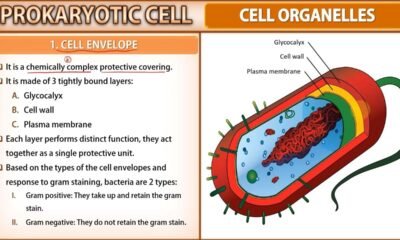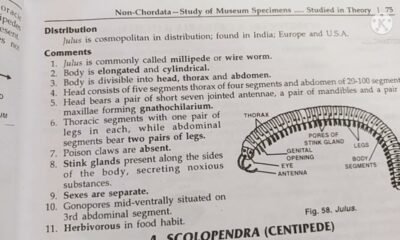Blog
Mushroom Cultivation | Mycology

In this article we will discuss about mushroom cultivation
Mushroom Cultivation
- Mushrooms are the fruiting body of edible fungi, commonly belonging to Basidiomycotina and rarely to Ascomycotina.
- The mushrooms is rich in proteins, fibres, vitamins and minerals.
- In the early years of mushroom culture in the Netherlands, compost was scooped into the mushroom trays and then inoculated with spores. A nine week wait followed, until the mycelium spawned sufficiently, flushing started and the grown mushrooms could be harvested by hand.
- The mushroom cultivation process hasn’t changed that much, but the way the successive steps are performed differ immensely.
- Mushroom cultivation can be divided into five phases: Composting, Spawning, Casing, Pinning and Harvesting
Steps of Mushroom Cultivation
Phase 1: Composting
- The growing cycle of mushroom cultivation starts with compost.
- Compost preparation starts with horse manure, get it from large horse breeding companies.
- Straw, gypsum, chicken manure and water are added to the horse manure.
- Commonly 100 kg of dung is mixed with 33 kg of straw.
- Gypsum is added @ 25 kg/tonne (1,000 kg) dung.
- The straw improves the structure, gypsum ensures the proper acidity and the two manures are the nutrients.
- The compost is produced in tunnels in order to prevent the smell.
- Air purification with ammonia wash prevents gas emissions from manure.
- It is kept at about 50oC for one week.
Phase 2: Spawning
- Fresh compost is pasteurized in a tunnel at 57-60°C to kill bacteria.
- The compost is mixed with spawn (mycelium) that produces mushrooms.
- Compost is moved to another tunnel for mycelium to spread.
- Mycelium fully permeates the compost in two weeks, making it ready for growers.
- Spawn production is a sophisticated process managed by dedicated companies:
- Grain is sterilized to prevent infection.
- Spores are inoculated into the grain.
- Grain is incubated for two weeks at 25°C, then transferred to refrigerator at 2°C to harden it.
- The spawn gets a shelf life of 6 months without the mycelium losing its vitality
Phase 3: Casing
- The matured compost is spread onto long stainless steel boxes, the mushroom beds.
- The beds are inside special dark rooms called cells.
- The temperature in the cells is kept warm, at about 23 degrees Celsius.
- A layer of peat casing material is added on top of the compost to keep the compost moist.
- Over a period of six days, 20 to 25 litres of water is sprinkled on each cell because more moisture is needed.
- After this, the fungus has two days to grow through the covering layer of casing soil.
Phase 4: Pinning
- Mushrooms grow naturally in autumn but can be cultivated year-round by simulating autumn conditions.
- Temperature in the cell is gradually lowered from 23°C to 17°C over four days.
- The temperature drop signals the mycelium to start sprouting mushrooms, similar to nature’s process.
- Once mycelium fully grows, it begins forming small buds called pins, which develop into mushrooms.
- Air temperature and humidity affect mushroom growth:
- Low temperature and humidity: More buds, smaller mushrooms.
- High temperature and humidity: Fewer buds, larger mushrooms.
Phase 5: Harvesting
- The temperature is kept steady at 18 degrees Celsius. Mushrooms grow best at this temperature.
- Mushrooms will grow 3 cm (1 inch) in a week, In week 3 the first flush is harvested.
- The selling fresh mushrooms are still harvested by hand.
- Hand-picking ensures mushrooms are removed undamaged.
- On average, a picker can harvest between 18 and 30 kilos of mushrooms an hour
- Nine days after the first flush, the second flush will be harvested.
- The second flush often consists of larger, but fewer mushrooms than the first flush.
Preservation of Mushrooms
- Discolouration, weight, and flavourloss are the main problems of harvesting stage of mushrooms.
- The following methods are used to Preservation of Mushrooms.
- Canning: Mushrooms are washed, blanched in hot water and citric acid (3-5 minutes)
- Drying: Preservation by reducing the moisture Content.
- Freezing: Subjecting to low temperature (-60°C)
- Chemical Preservation : such as SO2, sorbic acid, sodium benzoate, ascorbic acid, acetic acid, citric acid.
- Pickling: with salt, oil, spices and vinegar
- Steeping preservation: With salt solution

 Blog6 months ago
Blog6 months ago[PPT] Human Reproduction Class 12 Notes
- Blog6 months ago
Contribution of Indian Phycologists (4 Famous Algologist)
- Blog6 months ago
PG TRB Botany Study Material PDF Free Download

 Blog6 months ago
Blog6 months agoCell The Unit of Life Complete Notes | Class 11 & NEET Free Notes

 Blog6 months ago
Blog6 months ago[PPT] The living world Class 11 Notes

 Blog6 months ago
Blog6 months agoJulus General Characteristics | Free Biology Notes

 Blog6 months ago
Blog6 months agoClassification of Algae By Fritsch (11 Classes of Algae)
- Blog6 months ago
Class 12 Biology Notes Chapter wise PPT











